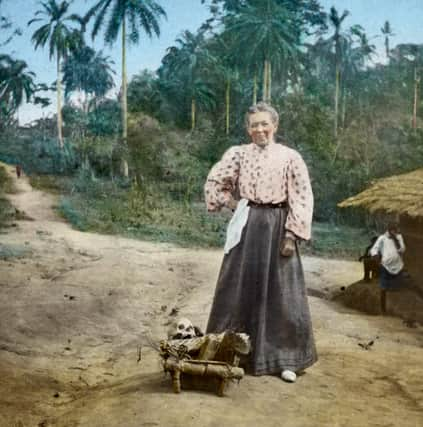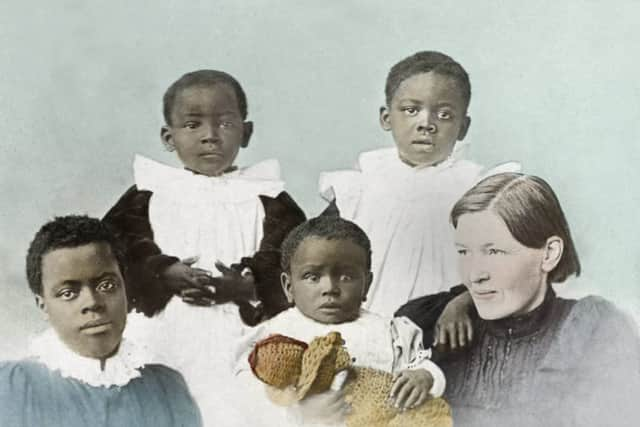Mary Slessor: The Dundee missionary who saved generations of children


BORN the second of seven children to a working class Dundonian family in 1848, Mary Slessor was expected to graft hard and die young in one of the city's many jute mills. Instead, she chose to venture to Africa where she worked tirelessly to save the lives of countless numbers of children. Often described unfairly as the female David Livingstone, she was much more than just another Christian missionary.
Mary Slessor came from an impoverished background. Originally from Aberdeen, her family moved to Dundee when she was aged 10 in search for work. Her mother was a skilled weaver and managed to find work in the mills, but her father, a shoemaker by trade, struggled to hold a job due to the alcoholism that would later play a part in costing him his life.
Advertisement
Hide AdAdvertisement
Hide AdThe young Mary was never destined for an easy life. For much of her childhood she was a 'half-timer', spending half her time working at the mill and the other half at school - her studies were paid for by the company.


Inspired by the work of David Livingstone, Mary decided that she would like to follow in the great man's footsteps. Mary arrived as a missionary in Ethiopia in August 1876.
Upon moving to the Nigerian town of Calabar, Mary encountered the local tribes and was shocked at their archaic and often brutal traditions - particularly an old superstition involving the abandonment of new-born twins.
Natives believed that the birth of twins was a sign that a curse had been cast and that the body of one of the two children must contain an evil spirit. Since it was impossible to tell which baby harboured the demon, both would be left to perish in the bush.
Mary was horrified by this practice and spent much of the next 40 years rescuing babies abandoned by their mothers.


Against the advice of her mission society, nine twins were adopted by Slessor, known as Ma’ to the children.
A letter from one of her adopted sons Dan, held by the Mary Slessor Foundation, based in Dundee, makes clear the level of love and care she afforded the young ones.
It said: “Ma was the ideal mother, with us she was not the mistress or the missionary worker, she was our mother and the home our family.
Advertisement
Hide AdAdvertisement
Hide Ad“She would bake the family bread but almost all of it goes to the children.
“When one is ill, up she carries him on her bed, well tucked, and then she is busy to prepare some barley broth barefooted, thinly clothes. She would move silently lest she would wake the sick child.”
She also took great interest in solving tribal disagreements and would encourage chiefs of warring tribes to sit with her under a shaded tree and sort out their differences in an amicable fashion.
As she began to immerse herself in Calabar customs, Mary cut her red hair short and consumed the local produce. She even went to great lengths to learn with proficiency the language, and ditched her translator as soon as she could. Mary also battled fever after fever as she battled with the inadequate cleanliness of the local water supply.
Author Isabel Watkins describes Mary's impact: "She was just an amazing lady. Long before she left for Africa she worked herself to the bone in the jute mills while simultaneously managing to earn an education at school.
"She suffered a tough upbringing, and had to endure the deaths of both her elder brothers and her father. Perhaps this is what gave her such strength as a diplomat and why she was able to stand up so fiercely against male leaders to the extent that she won their respect and adulation."
Mary and 4 children in Old Calalbar, Nigeria. Picture: University of Edinburgh.
Slessor was the only active missionary working in the remote Calabar region. In most casees, the villages could only be accessed by canoe.
Advertisement
Hide AdAdvertisement
Hide AdShe eventually ventured deep into the jungle to settle with the Okoyong tribe in their own territories.
Slessor was unique in that she became the first white visitor to gain full acceptance there. The chief granted her permission to own land and to construct a school.
Slessor died in 1915. She was given a state funeral and is buried at the Eyamba Street Cemetery in Duke Town. Her likeness has appeared on Clydesdale Bank £10 notes since 1997.